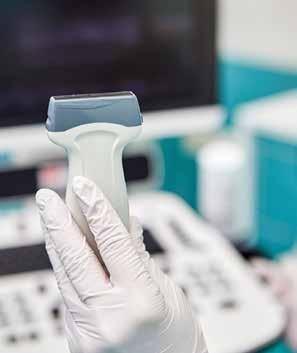SECTON REPORT YOUNG PHYSICIANS
BIASES UNFORTUNATELY ARE A NORMAL PART OF THE HUMAN CONDITION AND NEARLY EVERY PHYSICIAN IS IMPACTED BY COGNITIVE BIASES.”
THE FIRST STEP IN REDUCTION OF COGNITIVE BIASES IS BY INCREASING OUR AWARENESS OF THEM AND WE HOPEFULLY CAN IMPROVE PATIENT OUTCOMES AND ALSO GROW AS PHYSICIANS.“
Biases in Emergency Medicine Shana EN Ross, DO
“Remember that patient from last week?” are some of the most dreaded words emergency medicine physicians hear. Given the nature of EM with unfamiliar patients who present undifferentiated medical complaints while under time constraints and seeing multiple other patients with frequent interruptions, we are bound to make mistakes, often due to our biases. During residency, your attending was always there to check your biases and ensure you provided optimal care. However, once you are graduated and practicing solo, being aware of your cognitive biases is imperative to your growth as a physician and for patient safety. Cognitive biases are described as flaws in cognition, or systematic distortions, that alter reality.1 Biases unfortunately are a normal part of the human condition and nearly every physician is impacted by cognitive biases. Myriad biases have been described in the literature, and the majority of biases physicians make is with diagnostic accuracy.2 A meta-analysis by Saposnik et al. identified that framing effect and overconfidence biases, or blind-spot bias are the most prevalent biases among physicians, while confirmation and anchoring biases are also common.2 Blind-spot Bias
Being able to recognize others biases while overestimating one’s abilities and not being cognizant of one’s own biases
Framing Effect Bias
Opinions and decisions based on influences of the words, context, positive/negative connotations
Confirmation Bias
Interpreting the data and information to support one’s preexisting beliefs and ignoring the evidence that refutes it
Anchoring Bias
Relying too heavily on the first piece of information given and refuting to readjust beliefs after receiving new information
Biases do not occur due to lack of knowledge, and the same goes for most medical errors.3 Understanding our cognitive biases are the first step in preventing them from impacting our medical-decision making in a negative way. Studies show that mid-carren EM physicians have more awareness of blind-spot bias, likely due to education and experience.4 Hansen3 describes four methods to reduce cognitive biases in emergency medicine: 1. Checklists: Through checklists attention is forced in certain areas that may be overlooked otherwise 2. Forcing Functions: Forcing functions are “if this, then that” scenarios, that encourage systematic approach such as applying the HEART score before discharging a patient with chest pain 3. Biostatistical Knowledge: Understanding prevalence of diseases and statistical knowledge will assist physicians from disregarding a diagnosis 4. Transition into Type 2, or, Slow Thinking: This allows for exploration of other options or potential diagnosis vs type one which is reflexive and based on heuristics The first step in reduction of cognitive biases is by increasing our awareness of them and we hopefully can improve patient outcomes and also grow as physicians. References 1. Haselton MG, Nettle D, Andrews PW. The evolution 3. Hansen K. Cognitive bias in emergency medicine. Emerg Med Australas. 2020 Oct;32(5):852-855. doi: of cognitive bias. In: Buss DM, ed. The Handbook of 10.1111/1742-6723.13622. Epub 2020 Sep 9. PMID: Evolutionary Psychology. Hoboken, NJ: John Wiley & 32902161 Sons, 2005; 724–46. 4. Pines JM, Strong A. Cognitive Biases in 2. Saposnik G, Redelmeier D, Ruff CC, Tobler PN. Emergency Physicians: A Pilot Study. J Emerg Cognitive biases associated with medical decisions: Med. 2019;57(2):168-172. doi:10.1016/j. a systematic review. BMC Med Inform Decis Mak. jemermed.2019.03.048 2016;16(1):138. Published 2016 Nov 3. doi:10.1186/ s12911-016-0377-1 COMMON SENSE JANUARY/FEBRUARY 2021
41























